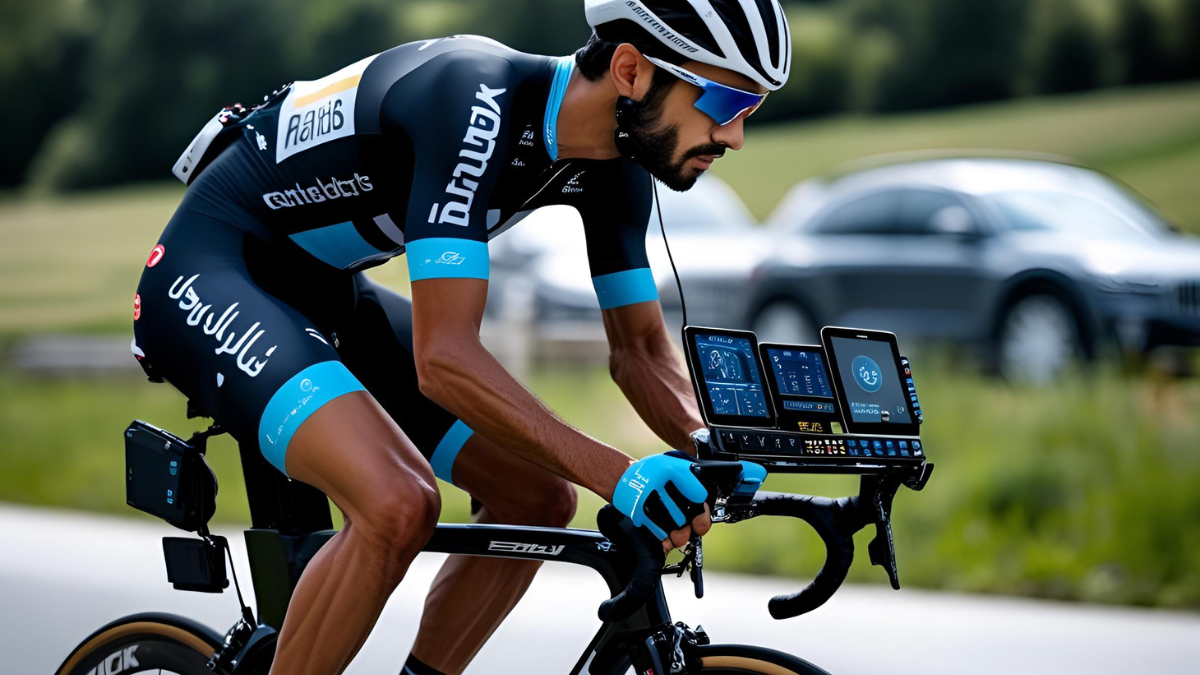Cycling is a funny old game. Call me a grumpy old man (and you’d be right…) but it seems like more and more these days, in cycling, it’s easy to spend as much time thinking about how your bike and kit looks, (Think pristine white cycling shoes!), as much as how your bike and body function together… it’s a sport of form AND function…
And I admit, I am no different, I want my bike to look cool!
Another of the key parts of any budding cycling fashionista’s “aesthetic” is, of course, footwear. Those crystal white fresh kicks, not dissimilar to those worn by the beacon of fashion and style himself MVDP (Mathieu van der Poel) are an essential accessory to completing that razor sharp look that will cause heads to turn at the cafe…

On a serious note however, your cycling shoes can (and do) have a massive influence on how well your body can function on a bike.
This sounds obvious – the stiffness of the carbon used to make the sole, the fit and material of the upper, the retention systems etc can all contribute to how well a shoe works for a given individual, but the design of a shoe can also have a significant influence on where the cleats can be positioned relative to foot structure.
This is very interesting, as it can affect everything from force production and power transfer, to stability, comfort, muscle recruitment and also, the risk of experiencing pain and discomfort, as well as sometimes contributing to injury on the bike.
When we talk about cleats and their positioning, there are many things to consider; fore/aft placement, rotation, float, medial or lateral bias, canting, shimming etc… but for the sake of this article, we’re going to focus on how your cycling shoes can affect the fore/aft positioning (as well as the feel of the fore/aft positioning), and why this is a critical part of your bike fit you should get right.

Out-dated Advice
Cycling lore has long dictated that placing the centre of the cleat in line with the 1st MTP (metatarsophalangeal) joint, so that the ball of the foot is directly over the pedal axle, is the “correct” placement of the cleats. This is overly simplistic, outdated advice at best.
There are many factors to consider when deciding on an optimal cleat position for a rider, including but not limited to:
- Riding goals,
- What particular discipline(s) of cycling a rider is partaking in
- Intensity
- Duration
- Biomechanical functionality
- Propensity to certain types of injuries
- The list goes on…
Why might this age old cycling wisdom around cleat positioning be “outdated advice” you might ask? Well, let me give you some food for thought.

The Hips Don’t Lie
Let’s take one of the most basic of human movements, the squat, as an example. When performing a squat, all of the force is transferred into the ground via the feet. As we start the movement, we drop into a given range of flexion at the hip, knee and ankle joints, to then push the ground away to move ourselves back to the starting point of the movement – ie, standing.
We want to create as much of a stable platform / solid connection with the ground via the feet as possible in order to perform the movement optimally. This usually means a tripod stance whereby one can feel ground contact though the 1st and 5th MTP joints and the heel simultaneously.
This is also essential for optimal activation of one of the most desired muscle groups to perform this movement – ie, the posterior chain (Glutes, Hamstrings…). If you were to try and perform the same squat, but with the heels raised off the ground and floating in space, this would be far more difficult…
There would be significantly less surface area of the foot in contact with the ground to create the necessary stability required to perform the movement well, as well as a bias towards loading the anterior chain (primarily the quads and calves), whilst putting the knee under significantly higher loads.

Squat Well, Pedal Well?
The same principles apply when pedalling a bicycle. We have influence over the position of our cleats in order to help (or hinder) this, which will all depend on how well a rider functions, the demands of their cycling (duration, intensity etc) and how much stability they need in order to pedal with good mechanics.
Generally speaking, the further forwards the cleat is positioned relative to the foot structure, the less stable the foot becomes as more force is applied through the pedal. The tipping point of where the cleat is placed too far forwards differs from rider to rider, but the consequences usually involve some sort of muscular and/or biomechanical compensation strategies that can at best, result in a loss of pedalling efficiency and power or, at worst, increasing the chances of sustaining an injury.
For most riders, a more rearward cleat position (with the centre of the cleat placed at least 15-20mm behind the 1st MTP joint) helps to increase proprioception throughout a greater surface area of the foot (think back to our squat and the tripod stance), creating better stability on the pedals and more muscle recruitment from the posterior chain.
There are some other advantages to having a more rearward cleat position; the saddle height (and as a result, the front end of the bike) can be lower, improving aerodynamics, as well as reducing load on the quads, calves, achilles, knees and hip flexors.
This can be of particular interest for time trialists, triathletes, ultra distance and audax riders, or anyone who’s riding demands a more consistent power output over longer periods of time rather than short, sharp bursts of very high power, or those who have experienced previous injuries or pain in these areas.

How To Choose Wisely
So, how can cycling shoes influence cleat positioning and subsequent muscle recruitment?
There are a number of things to consider:
Firstly, the fit of the shoe is very important to achieving a good cleat position.
All too often, we see riders, especially those with wider feet come into the studio with shoes that are a size (or two!) too long as a result of trying to obtain more width to adequately accommodate the shape of their foot.
This not only creates excessive room at the front of the shoe for the foot to move into under load, but also places excessive pressure on the lateral edge of the foot and often skews where the cleat is positioned relative to the 1st MTP joint.
Cycling shoes come in all different shapes, everything from a very narrow and tapered fit (think SIDI, Giro, older Fizik shoes), to a more anatomical or ”foot shaped” last (think Lake). Finding a shoe that matches the shape of your foot is imperative to creating stability on the pedal. It’s very much a case of prioritising function over fashion here.

Secondly, where the manufacturer actually drills the mounting bolts for the cleats has a huge influence on your pedalling.
If the mounting holes are drilled too far forwards, no matter how far back you place the cleats on the shoe, you’ll be fighting a losing battle. Look for a cycling shoe that has adjustable cleat bolt mounts, usually via a sliding adjustment system or a reversible cleat bolt mount, but also make sure that the holes are drilled far enough back towards the arch of the shoe. Lake, Shimano and the S-Works shoes from Specialized usually do this very well.
We’ve seen instances of more fashion orientated shoe brands that have done well by installing a sliding cleat bolt adjustment, but just completely mess it up by placing the mounting point too far forwards, rendering the shoes useless for the majority of riders.

Thirdly, the geometry of the shoe can influence where the cleats can be positioned…
But also, and probably more importantly, how the force is transferred through the pedals, even if the cleats are positioned consistently relative to the 1st MTP joint from a shoe with a different last/geometry.
The runners amongst us might be more familiar with how shoe geometry affects gait/muscle recruitment, but it can also be very influential in cycling as well.
Grossly oversimplified, a shoe that has excessive amounts of toe spring for a particular rider… (where the front of the shoe curves upwards, placing the big toe into a position of constant extension – Google the “Windlass mechanism”, which doesn’t work as it should when riding a bike, as the foot is held in one position and can’t move through its natural gait cycle)
…can force the tendons and fascia through the foot, all the way up the chain into the hips and lower back, to be placed under additional or excessive strain. Selecting a shoe that has a geometry that compliments your individual foot mechanics/function is an often overlooked part of selecting a cycling shoe.
Have a look at your cycling shoes from a side profile view. Is the sole curved or flat? Where does it curve – does it have of toe spring or heel rise? How quickly does the toe spring or heel rise ramp up?

There are of course many more considerations to take into account on an individual level, but hopefully this might get you starting to think about how your cycling shoes and cleats interact with not only your bike, everything further up the kinetic chain, and how this might positively or negatively be affecting your cycling.
Words by Mat (one ‘t’) Walton
If you’ve made it to the end of this article, thank you for sticking it out and we hope it’s been useful for you!
If you have any questions on your bike buying journey get in touch, we’re always an open door and there’s no such thing as a silly question.
Looking for new cycling shoes? We measure your feet, assess your riding and let you test ride your shoes before you buy! Who else will let you do that? Check out our shoe fitting service here.




